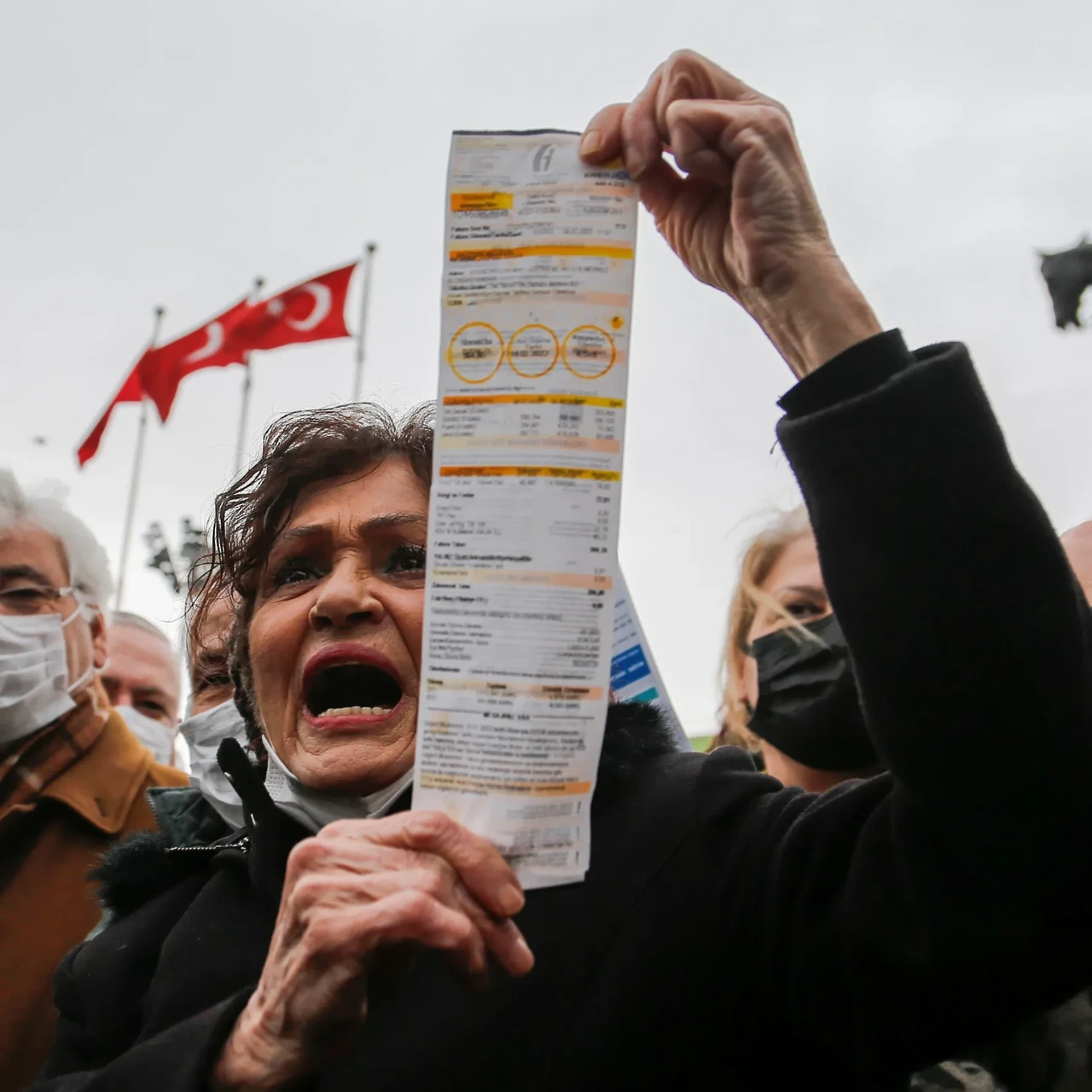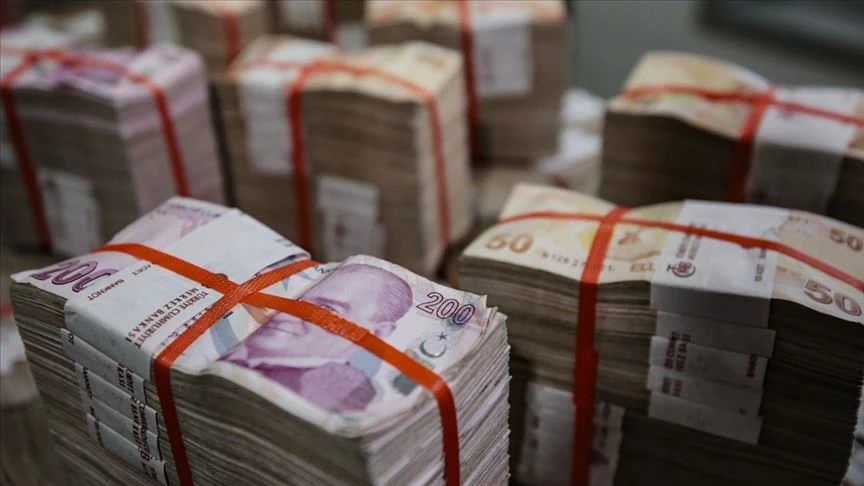Türkiye’s economic crisis: Looming threat of stagflation
 A woman displays her electricity bill during a protest against high energy prices in Ankara (Reuters Photo)
A woman displays her electricity bill during a protest against high energy prices in Ankara (Reuters Photo)
Türkiye is showing signs of stagflation, where stagnant growth meets persistent inflation. This economic condition, if it fully materializes, could lead to prolonged economic hardship, higher unemployment, and declining living standards, posing severe risks to both the workforce and businesses.
So, what is stagflation?
- Definition and causes: Stagflation is a term coined from “stagnation” and “inflation,” describing an economy that experiences stagnant growth alongside rising prices. It is often triggered by poor monetary policies, currency instability, and external shocks. In Türkiye’s case, a combination of aggressive monetary tightening, external financial pressures, and internal policy missteps are contributing to this dangerous economic mix.
- Economic consequences: The most concerning aspect of stagflation is its impact on the labor market. As businesses face higher costs and reduced demand, layoffs become more common, exacerbating unemployment. Meanwhile, consumers suffer as their purchasing power declines amid rising prices. The cumulative effect is a deepening economic malaise, with both businesses and households feeling the squeeze.

What is the current economic landscape in Türkiye?
- Inflation on the rise: Türkiye has one of the highest inflation rates globally, with annual inflation at 61.78% as of July 2024, placing it first among EU countries and second among G-20 nations, behind Argentina.
- Turkish lira depreciated: The Turkish lira’s steep depreciation has further exacerbated inflationary pressures, with the dollar surging from ₺8.5 to ₺33.7 in just three years. The euro followed a similar trajectory, rising from ₺9.9 to ₺37.2.
- Growth stagnation: Although Türkiye reported a 4.5% growth in 2023, recent economic indicators signal a slowdown. The Industrial Production Index, Foreign Trade Index, and the Manufacturing Purchasing Managers’ Index (PMI) all point to declining economic activity. BETAM’s July 2024 report projects a 0.6% contraction for the second quarter, marking a sharp turnaround from previous growth trends.
- Growing unemployment: Persistent inflation is eroding real wages, leading to widespread financial distress among workers and retirees. In Türkiye, unemployment is rising, with an additional 23,000 people joining the ranks of the jobless in August 2024, bringing the total to 3.16 million. The situation is particularly dire for the youth, with joblessness in the 15-24 age group reaching to 16.3% in August 2024.
- Financial hurdles: Businesses, especially small and medium-sized enterprises (SMEs), are under pressure. Inflation accounting measures introduced by the government are deterring new investments and straining cash flows. Economic bodies like the Independent Industrialists and Businessmen’s Association (MUSIAD), Istanbul Chamber of Industry (ISO), Istanbul Chamber of Commerce (ITO), and Ankara Chamber of Industry (ASO) have voiced strong opposition to these policies, calling for their repeal to prevent further economic slowdown.
- Decreased investment: Ministry of Industry and Technology data indicates a 43.6% drop in investment incentives in June compared to last year, with the number of incentivized investments falling by 38%. Over the first half of 2024, the total value of incentivized investments decreased by 42.75% year-over-year.

Is Türkiye under the risk of stagflation or slumpflation in 2024?
Although official data does not confirm it, the combination of ongoing inflation, economic slowdown, and restrictive monetary policies suggests that the risk of stagflation is increasing.
- On Aug. 12, former Treasury Undersecretary Dr. Mahfi Egilmez once again sounded the alarm about Türkiye’s economic trajectory, citing worrying trends in industrial production and rising unemployment.
- He emphasized that the shrinking current account deficit could signal a shift toward negative growth over the next few quarters, potentially leading to slumpflation – a condition even more severe than stagflation, characterized by declining output and high inflation.
- He referenced the “Transition to a Strong Economy” program implemented post-2001, which successfully navigated past economic troubles, but also stressed that such a turnaround requires substantial reforms and improved economic expectations. Without these efforts, the cost to the economy could be significant, with deepening stagflation or even slumpflation as possible outcomes.
Did Türkiye face stagflation before?
Türkiye’s economy has faced stagflation, a dangerous combination of stagnation and inflation, multiple times in its history. Turkish economic expert Dr. Mahfi Egilmez highlighted several instances of stagflation in Türkiye.
- Following World War II, in 1948, inflation surged to 7.5%, while gross domestic growth stagnated at 0%.
- Again, in 1991, while the economy grew by a mere 0.4%, inflation skyrocketed to 71.1%.
- During the global financial crisis in 2008, Türkiye’s growth dipped to 0.8%, with inflation reaching 8.1%, bringing the economy perilously close to stagflation.
- Most recently, data from the last quarter of 2018 and the first quarter of 2019 indicated another period of stagflation, with similar economic pressures.

What measures has Türkiye taken to combat potential stagflation?
Escaping stagflation requires a delicate balance of economic policies. Typically, countries combat high inflation by raising interest rates to cool the economy, but this often leads to slower growth.
- The Turkish government has responded with a series of policy measures aimed at controlling inflation while trying to sustain growth. However, these measures also risk further dampening economic activity, complicating the fight against stagflation.
- On May 13, the Turkish government unveiled a savings plan in a bid to tackle soaring inflation and enhance efficiency within the public sector. Simsek outlined three fundamental pillars of expenditure measures: “Firstly, savings in the public sector; secondly, discipline in budget expenditures; and thirdly, efficiency in public investments.”
- Finance Minister Mehmet Simsek reversed the previous interest rate cuts, raising the policy rate from 8.5% to 50% over nine months. Additionally, The Turkish central bank is expected to leave its key interest rate steady at 50% during its monetary committee meeting tomorrow.
- Other measures include increasing the reserve requirements for bank deposits, raising taxes, and implementing inflation accounting.
Experts’ opinion: Some economists argue that Türkiye must endure short-term economic pain to stabilize inflation, while others believe the government’s insistence on maintaining growth could hinder inflation control efforts.
Looking forward: Challenges ahead for Turkish economy
The path to overcoming stagflation is fraught with difficulties. While cooling inflation through monetary tightening is necessary, it often comes at the cost of slower growth and higher unemployment. The government’s ability to strike a balance between these competing priorities will be critical in determining Türkiye’s economic trajectory in the coming months.



